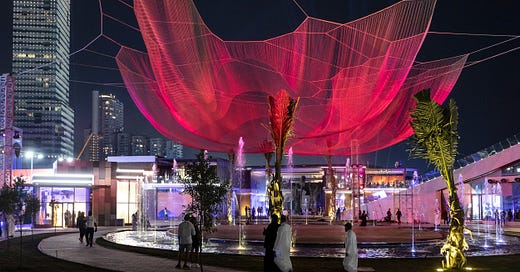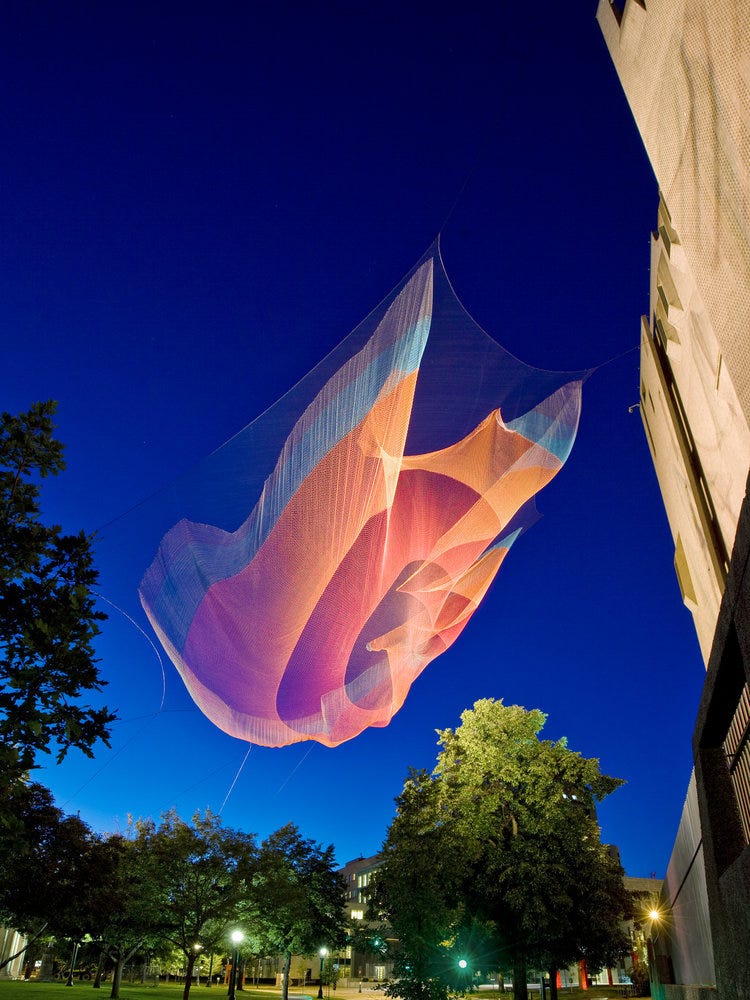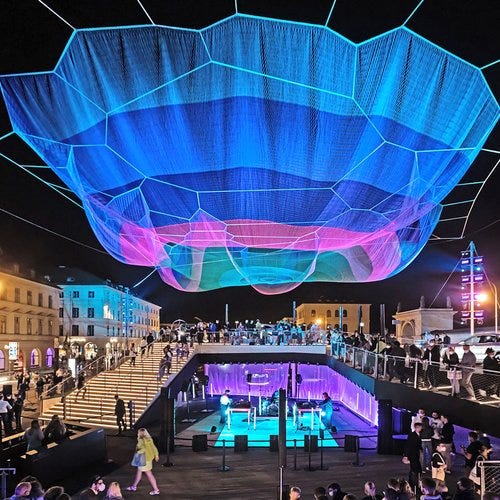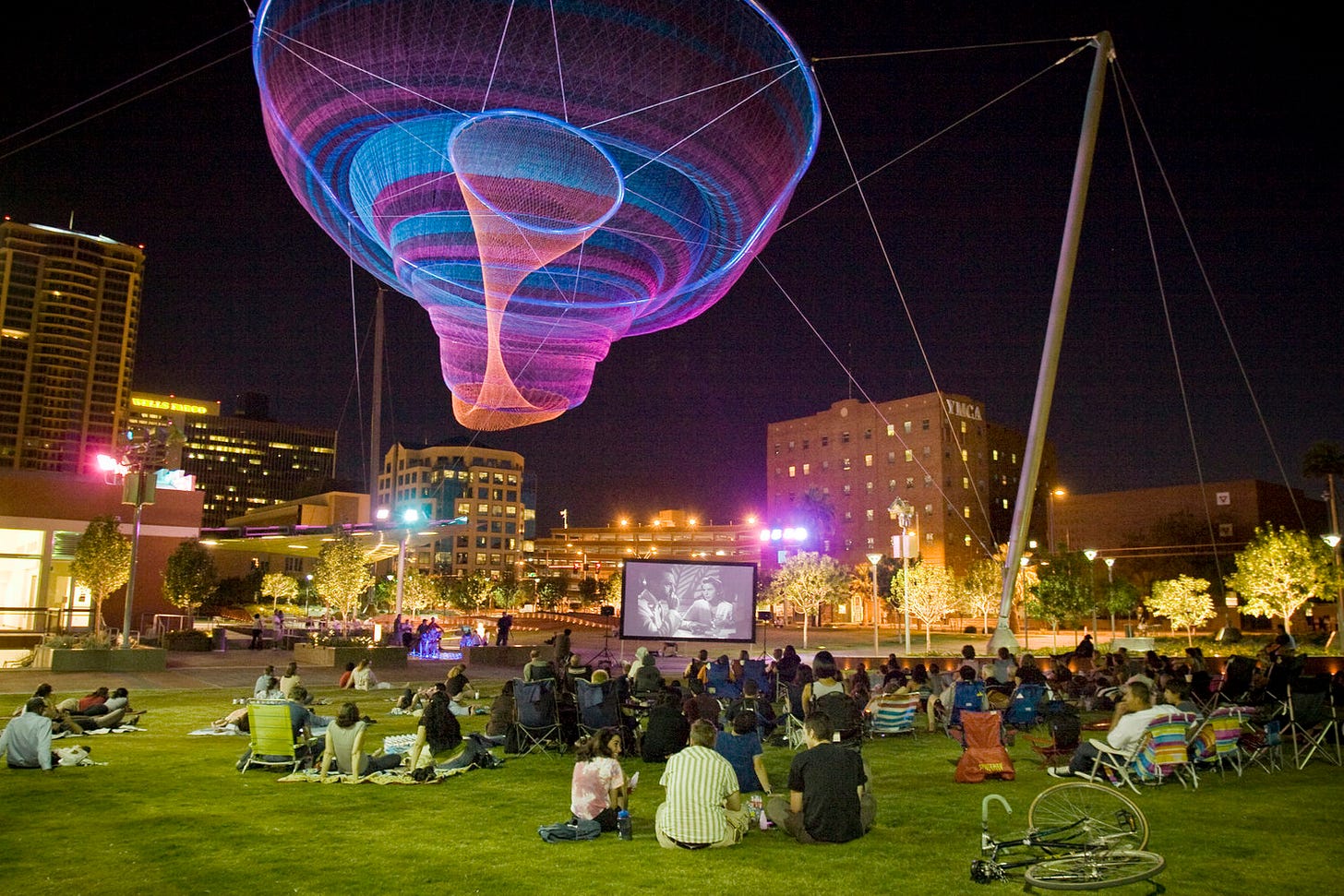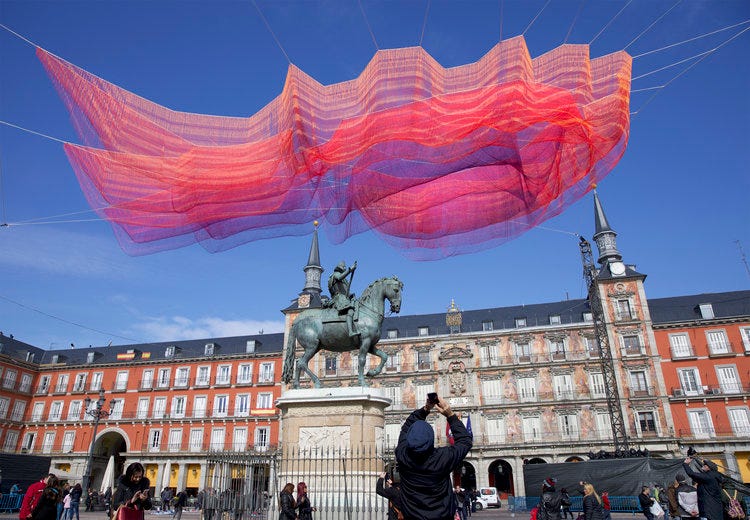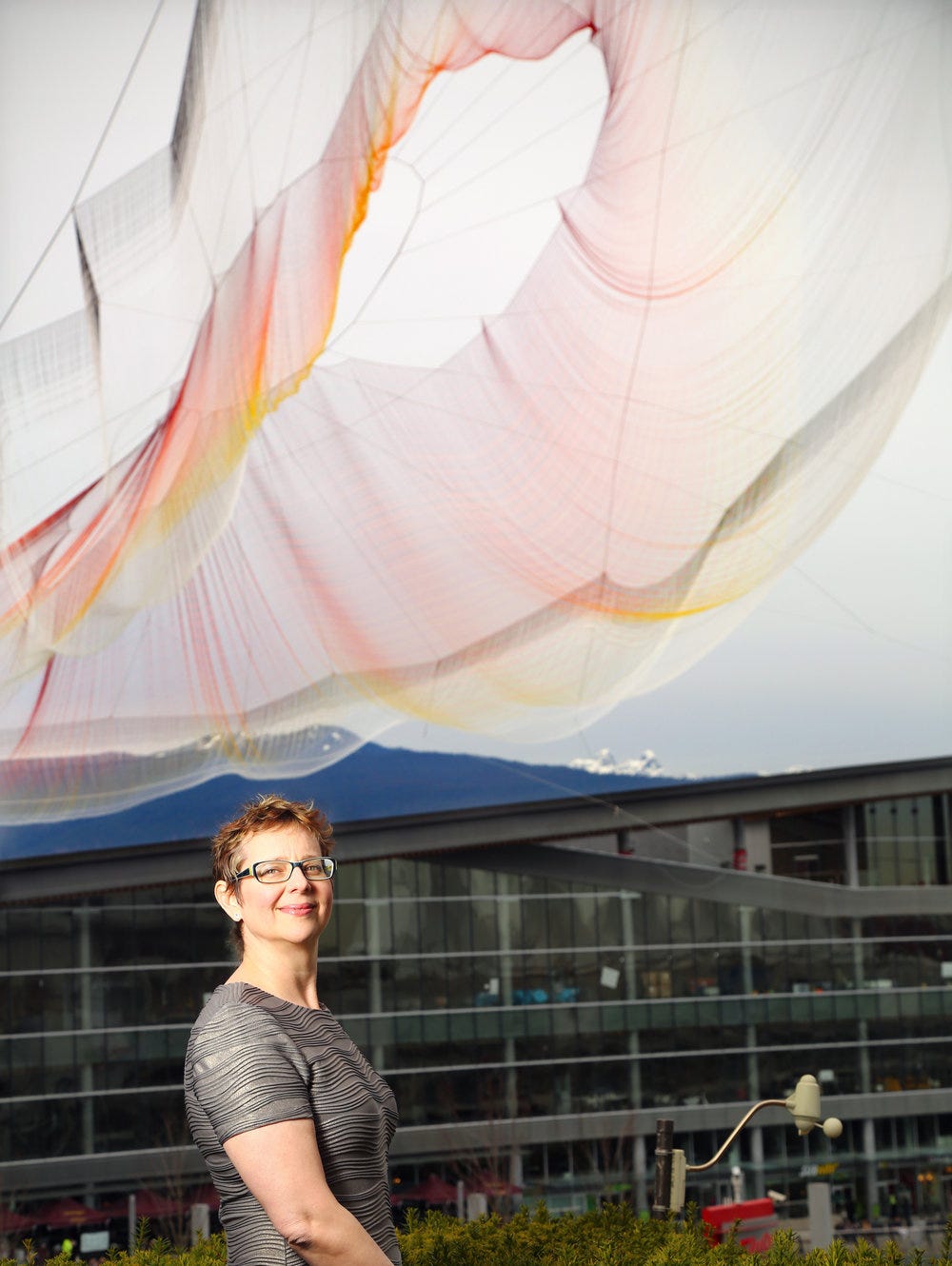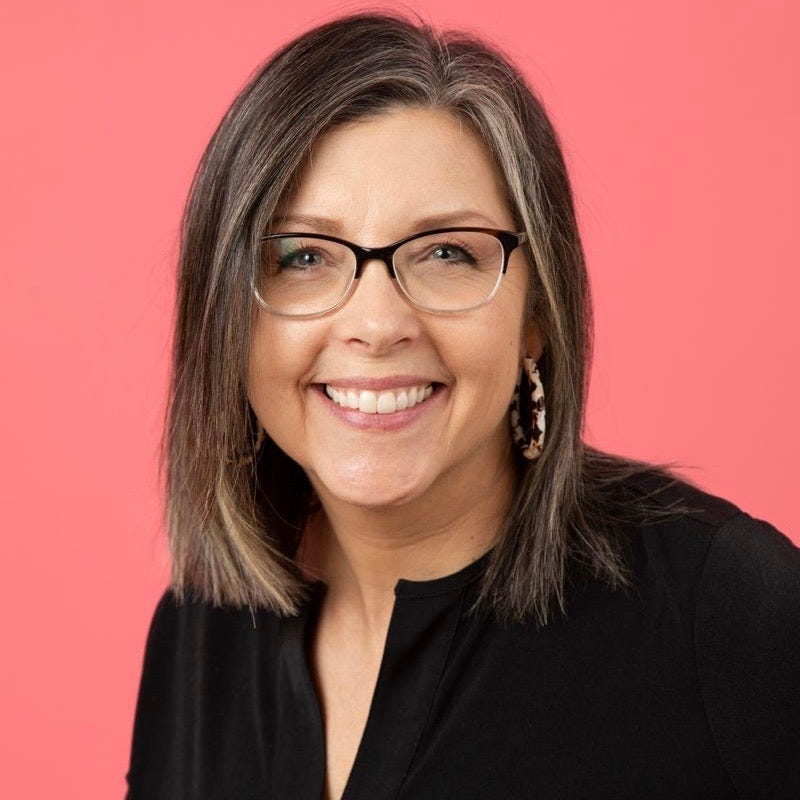Earthtime 1.26 Jeddah, Saudi Arabia, 2021
After a series of disappointments and setbacks, in 1997, Echelman won a Fulbright Senior Lectureship and traveled to India with the intention of giving painting exhibitions. Her artistic supplies were lost in transit to Mahabalipuram, so she began working with local bronze casters but the material was heavy and too expensive for her budget. While watching fishermen bundling their nets, Echelman was inspired to take a new approach to sculpture, creating a volumetric form without heavy, solid materials. In collaboration with the fishermen, Echelman created a series of netted sculptures, her "Bellbottoms" series. She went on to become an award-winning and prestigious artist with her airy net-like sculptures.
“I feel a need to find moments of contemplation in the midst of daily city life,” Echelman said.
See
Janet Echelman sculpts at the scale of buildings and city blocks. Echelman’s work defies categorization, intersecting Sculpture, Architecture, Urban Design, Material Science, Structural & Aeronautical Engineering, and Computer Science. Echelman’s art transforms with wind and light and shifts from being “an object you look at into an experience you can get lost in.”
Earthtime 1.26 Denver, Colorado, 2010
“If my art can create an opportunity to contemplate the larger cycles of time and remind us to listen to our inner selves, I believe this could be transformative.”
The City of Denver asked the artist to create a monumental yet temporary work exploring the theme of the interconnectedness of the 35 nations that make up the Western Hemisphere. She drew inspiration from the NASA Jet Propulsion Laboratory’s announcement that the February 2010 Chile earthquake shortened the length of the earth’s day by 1.26 microseconds by slightly redistributing the earth’s mass. A 3-dimensional form of the tsunami’s amplitude rippling across the Pacific became the basis for the sculptural form.
Earthtime 1.26 Munich, Germany, 2021
"I'm excited to install Earthtime 1.26 Munich in the historic Odeonsplatz, where past and present intertwine to create a dynamic urban now. My artwork reflects an interconnectedness of opposites - flexibility with strength, earth with sky, and things we can control with the forces beyond us. I invite viewers to pause beneath my sculpture for a moment to contemplate our interconnectedness with each other and our planet, and to become aware of our own sensory experience." - Janet Echelman
Her Secret is Patience, Phoenix, AZ, 2009
EARTHTIME 1.78 MADRID, SPAIN, 2018
“In the last four hundred years, people have gathered at Plaza Mayor to witness bull-fights and Spanish Inquisition burnings,” said Echelman, “Today, we gather together with art that explores our concept of time to discuss ideas. This is a hopeful trajectory for humanity.”
Say
Echelman found her authentic voice as an artist when her paints went missing, forcing her to look to an unorthodox new art material.
Can you think of any inventions or solutions created due to adversity?
Echelman has worked with a diverse range of professionals, such as fishermen, engineers specializing in net, aeronautical, steel structure, and concrete, design consultants, fabricators, lighting experts, and installers. It's hard to say how much credit should be given to Echelman alone. What do you think?
How would it feel to lay under one of Echelman’s dynamic sculptures? Which would you choose?
Do
Create a windsock, fly a kite, or make a pinwheel. Illuminate the wind… it’s already there!
Her TED talk "Taking Imagination Seriously" has been translated into 35 languages with over two million views.
About Janet Echelman
I try to keep a sense of wonder in my own life and practice. I try to hold a space of time to experiment, as a kind of research.-Echelman
Janet Echelman (born March 19, 1966) is an American sculptor and fiber artist. She graduated from Harvard undergrad and was subsequently rejected from seven grad schools. Through her response to adversity, she has found her art form and today Echelman constructs net sculpture environments in cities around the world. Her studio is based in Boston, where she lives with her husband, David Feldman, and their two children. Read more about her inspiring story here.
Recipient of the Guggenheim Fellowship, Harvard Loeb Fellowship, Aspen Institute Henry Crown Fellowship, and Fulbright Sr. Lectureship, Echelman received the Smithsonian American Ingenuity Award in Visual Arts, honoring “the greatest innovators in America today.” In popular culture, Oprah ranked Echelman’s work #1 on her List of 50 Things That Make You Say Wow!, and Echelman was named an Architectural Digest Innovator for "changing the very essence of urban spaces."
Please share your reflections with me by replying to this post and tagging my Wonder Wander Facebook or Instagram pages!

